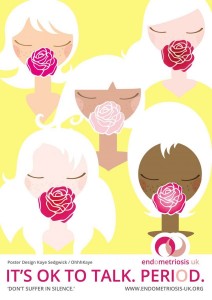
This week is Endometriosis awareness week, it’s the unseen and therefore often misdiagnosed disease that only affects women. The chronic condition can have an impact on both emotional wellbeing and physical health, yet so many still don’t fully understand what it is, its symptoms or the full extent of the condition.
Here, Dr Giuseppe, GP and Medical Advisor at Prescription Doctor, a UK based online pharmacy and doctor service providing customers with a safe, convenient and discreet way of accessing treatments, provides answers to 7 key questions surrounding the condition. The answers should provide some clarity, help aid awareness and highlight the challenges those face whose lives have been affected by the condition.
What actually is Endometriosis?
Endometriosis is a long-term condition, which only affects women, whereby tissue (a bit like the lining of the womb) begins to develop and grow in other places in the body such as the fallopian tubes and the ovaries. We know that each month, as part of natural hormonal changes, a woman’s tissue lining in her womb builds and then breaks down. When no egg has been fertilised, the tissue lining exits the woman’s body as a period, but for women living with endometriosis, its slightly different and not quite as straightforward. When the tissue breaks down during the hormonal change in a woman living with endometriosis, it is unable to exit the body so the blood stores inside the body – making it very painful for some women.
How does it develop?
Firstly, you can’t catch it, and you can’t pass it on. Although there are several theories on hormones, genetics and the way women menstruate; there is no known singular cause. Whilst the condition does tend to run in families, its not been exclusively proven and its likely that a combination of multiple elements cause the condition.
What are the symptoms?
As with any condition, there are some typical symptoms of endometriosis however it is really important to note that symptoms can vary from women to women. You may have a friend or family member who has been diagnosed with endometriosis but their symptoms are completely different. Some women have no noticeable symptoms and the condition appears ‘hidden’ whilst other women may have severe symptoms both physically and mentally. For some women, unfortunately, endometriosis can be linked with a low mood and feelings of depression; this is because the condition can have a detrimental impact on day-to-day life.
The main symptoms of endometriosis are:
- Period pain; women with endometriosis are more likely to have painful periods and this can be anywhere from mild pain to excruciating pain meaning that they aren’t able to do normal day to day activities;
- Pelvic pain; usually in the lower abdomen or the lower back.
- Heavy or irregular periods;
- Nausea, diarrhoea or constipation;
- Pain during sex;
- Difficulty when trying to get pregnant or infertility (not all women with endometriosis will have fertility problems and not all women will need treatment to get pregnant).
Who does it affect?
Endometriosis affects 1 in 10 women in the UK. Endometriosis is a chronic and detrimental disease, impacting women (and girls) of childbearing age, and it is estimated that around 1.5 million women in the UK are currently living with the condition.
How can you manage it?
Although there is no cure for endometriosis, there are so many treatments for women and these can help with the symptoms of the condition. Depending on the symptoms you have, your circumstances and the severity of both the symptoms and the disease, will affect what treatments are available for you.
How can you treat it?
If your symptoms are mild, there may be no need for treatment and you may find that your symptoms get better on their own.
Some treatments will focus on relieving the pain such as painkillers which may supress some of the symptoms. Other women will be prescribed hormone medicines and different contraceptive treatments to help manage the condition by trying to control the level or stopping the production of oestrogen in their body.
A symptom and complication of endometriosis is the difficulty women may be faced with when trying to get pregnant. There are treatments available to help improve the chances of conceiving and slow the growth of the endometriosis tissue such as surgery to remove the tissue during a laparoscopy. The surgeon will be able to destroy parts of the affected tissue with a laser.
Whilst every effort can be made to treat the condition, the outcome may be to have surgery to remove all or part of the areas that are affected by the endometriosis tissue. This can, in some cases, mean that surgery may be required to remove the womb, also known as a hysterectomy. This is an option that your GP or gynaecologist will discuss with you depending on your circumstances.
When should you visit your GP?
We’ve mentioned that endometriosis can often be misdiagnosed especially because of the difference in symptom levels and many other conditions may cause similar symptoms. It is however really important to see a GP if you think you have symptoms of endometriosis.
Some general advice would be to write down your symptoms before your appointment, this is because the GP may decide to examine the pelvic area and whilst symptoms can get better by themselves, equally, left untreated, the condition may worsen.
Your GP will be able to advise you if they suspect there is a possibility that you do have endometriosis and they may refer you to a gynaecologist to test for the condition. The only way to be certain whether you do have endometriosis will be from the test results, following either an internal or external ultrasound scan and a laparoscopy. The gynaecologist will be able to discuss your options for treatment depending on the results of your tests.
This piece has been brought to you by Prescription Doctor
For more information please contact Helen@helenkathleen.co.uk
